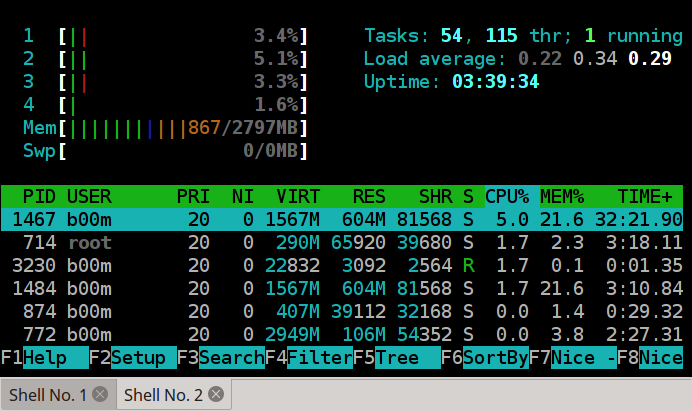- Check Available Memory Slots Linux Mint
- Check Available Memory Slots Linux Usb
- Check Available Memory Slots Linux Download
WritebackTmp: Memory used by Filesystem in Userspace (FUSE) for temporary write-back buffers. CommitLimit: The total amount of memory currently available to be allocated in the system. CommittedAS: The amount of memory estimated to satisfy all current demands. If a program requests some RAM, the request is recorded, but the RAM is only. Without opening my ThinkPad is there a way to determine if the 2GB of memory are in 1 slot leaving 1 slot available for additional memory? If you want to know whether the factory shipped rams are either occupying two slots or one slots without opening up the computer, you can use the following methods: 1.
@azorius (and probably unimplemented) means the bios/chipset can handle 4 slots, but the board manufacturer decided not to include 2 of the possible slots the bios can support in the physical realm that is the actual MB. Linux Check Memory Slots, baixar poker brasil online, slotsskills tj, mobile casino free bonuses-Read our full review. Lucky247 Casino - Welcome Bonus Wager. I added 'Total memory populated' (The sum of all non-empty slots), & 'NO EMPTY SLOTS - ALL SLOTS POPULATED' (if no free slots); & '# of slots available/open.' So, here I have part of my suggested enhancement - could not figure how to enumerute specific empty slots, so I left 2 lines commented out, if someone knows.
The output should look something like this:
Here's an example output for the command above:
Check Available Memory Slots Linux Mint

Also see: How To Get Hardware Information In Linux
This is our sixth post on getting hardware information. In this post we will see how to get RAM details such as size, speed, make, maximum capacity allowed RAM etc. We already covered some hardware related stuff in this series so far as given below.
Get BIOS, Firmware, Hardware And Drivers Details in Linux/Unix
Example1: Find RAM size(Total, available, used) in Linux. We can use below five methods to get details.
free

Want to understand free command output? check our post on free command.
Output:
top

Check Available Memory Slots Linux Usb
Check our excelent post to understand Linux top command output.

Output:
Output:
Output:
dmidecode –type memory
or
dmidecode -t 17
Output:
Example 2: Get RAM information like location, Maximum capacity of RAM supported, number of RAM devices present and sa lot info.
Output:
Example 3: Find RAM information like Type of RAM(SD RAM or DDR2/3), Speed, Manufacture etc
Output:
In our next post in this series we will see BIOS and Processer details.

Check Available Memory Slots Linux Download
The following two tabs change content below.- Docker: How to copy files to/from docker container - June 30, 2020
- Anisble: ERROR! unexpected parameter type in action:
Fix - June 29, 2020 - FREE: JOIN OUR DEVOPS TELEGRAM GROUPS - August 2, 2019
- Review: Whizlabs Practice Tests for AWS Certified Solutions Architect Professional (CSAP) - August 27, 2018
- How to use ohai/chef-shell to get node attributes - July 19, 2018